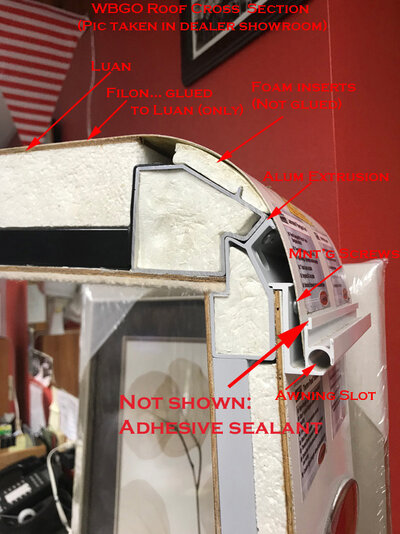^^^^^^^ X2. ^^^^^^ Well said.
No pics (or anything else additional) from the OP yet, but it sounds like at least some of the Filon has popped out of the aluminum extrusion (as John suggested) and "right above the awning" according to the OP. If so, it would seem prudent to just remove all the sealant (which is probably "bad") and then carefully ease the Filon out of the retention slot there near the awning all the way to one end of the extrusion; then "retuck it" (as James, the AZExpert says) from that awning area out to the end and reseal all of it with the ProFlex adhesive sealant. Then go reseal the other side too. Others may have a better idea, of course……may have actually done that repair.
BTW- I got a few very fine, long longitudinal cracks in the white "Geocell ProFlex" I used to reseal the Filon on my class C many years ago. My family took it on a long trip though the desert SW about a day and a half after I finished and I have since read that it likes several days to cure before use. My bad, I think; I believe it was likely caused by a wee bit of occasional racking of the coach …… even on good highways …. before the ProFlex was thoroughly cured. It was SOooo difficult to remove the newly installed sealant after they returned that I just covered it up with a continuous run of 2" EB tape. James doesn't like EB tape much, but mine has been up there about 4 years now and it looks almost like the day I installed it. It's white tape on a white Filon roof, so I'm the only guy who even "sees" it. Just my 'sperience, FWIW,
Good times and safe travels, all.

